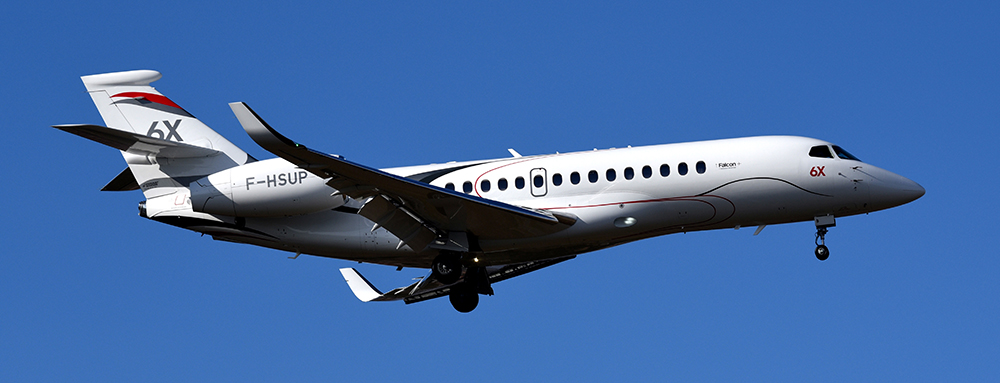In 1961 Avions Dassault met the military specification to replace the old MD 312 Dassault Flamant piston-engine liaison aircraft. At the same time the manufacturer clearly had an eye on the fast-rising business jet sector. On the drawing board, the Mystère XX took form as a fine executive jet with highly swept wing and tail unit. The first prototype F-WLKB (now at the Paris' Musée de l'Air et de l'Espace), powered by two Pratt & Whitney JT12A-8 engines, flew for the first time at Bordeaux/Mérignac on May 4, 1963. Pan American Instantly sensed the potential of the new aircraft and placed an order for 40 items for the U.S. market. But the U.S. airline imposed drastic conditions: the adoption of the new General Electric CF700-2C turbofans and a significantly widened cabin cross-section. Dassault complied with this diktat and quickly developed the Americanized version. The resulting Falcon 20C prototype flew on July 10, 1964 while the first series aircraft flew on January 1, 1965. On June 10, 1965, on the same day of the definitive Mystère XX certification in France and United States, French aviatrix Jacqueline Auriol, at the controls of prototype F-WLKB, set the new world speed record over 1,000 km at an average speed of 859 km/h. In 1966 the first "raw" items arrived at the Burbank's cabin furnishing centre. In that period Pan Am, for the imported aircraft, replaced the bellicose Mystère XX name with Fan Jet Falcon later simplified as Falcon 20. In 1967 Pan American Business Jets Division was specifically set up which, as its first move, converted 120 signed options into firm orders. From 1971 the more powerful CF700-2D were installed on the new Falcon 20D. From January 1, 1971, after the fusion with Breguet, the complete name of the manufacturer became Avions Marcel Dassault-Breguet Aviation (AMD-BA) and in 1990 Dassault Aviation.
In the picture: the fourth Dassault Falcon 6X F-HSUP, used as demonstrator by the manufacturer, landing at Turin/Caselle Airport on February 4, 2024. (Aeromedia)
(Aeromedia, February 2024)
